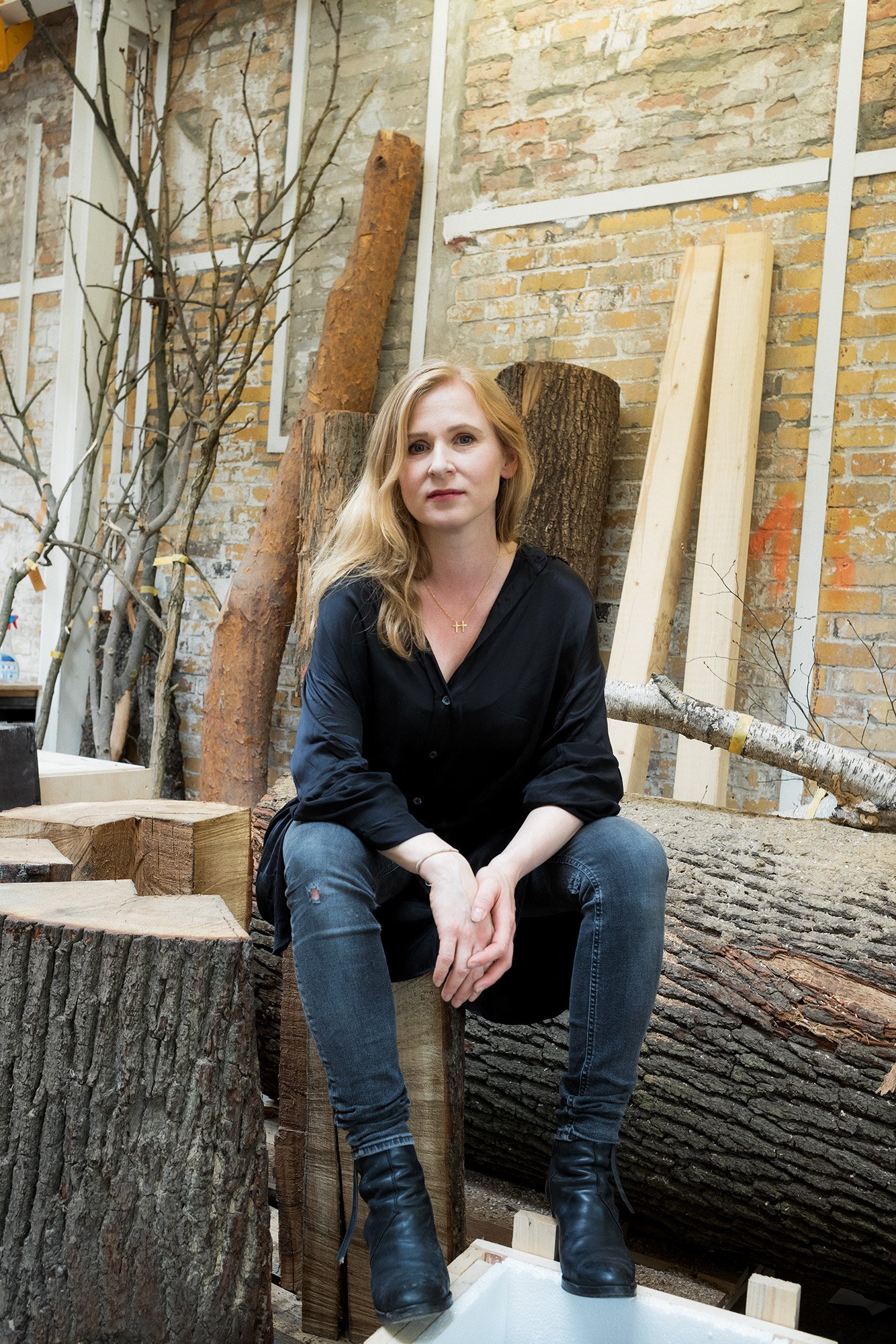
The Berlin-based artist Alicja Kwade has been keeping track of time in her own peculiar way during lockdown.
Kwade, of course, is best known for her large-scale sculptures and installations that bend perceptions of space and time. It’s a knotty and appropriate subject matter, especially for this artist.
During lockdown, she has been diligently working on her “CC In-Between” series, a visual chronicle of her experiences of the passing of each day, which she illustrates on paper with clock hands for each hour that elapses, making marks that reflect her perceptions.
Like many artists, Kwade has had shows postponed in 2020, such as a group exhibition “Diversity United” that was due to open at the New Tretyakov Gallery in Moscow in November. (It has now be rescheduled for 2021.)
Other events have gone ahead. Her work is currently on view in a solo exhibition that spans both the galleries and the grounds of the Langen Foundation in Neuss, Germany, through April 18, 2021. Her studio has also put together a map of her public sculptures around the world for people to view outside. Next up, she will have a solo exhibition in April at the Berlinische Galerie.
We checked in with the artist about how she’s been tending to her garden and keeping track of her ongoing chemistry experiments.
Alicja Kwade is one of 90 artists taking parting in the traveling group show, “Diversity United,” in Berlin, Moscow, and Paris in 2021. Courtesy stiftungkunst.de.
What are the most indispensable items in your studio and why?
My garden, my computer, my speakers and the disco ball, pencil and paper, and my amazing team.
What is the studio task on your agenda tomorrow that you are most looking forward to?
Planting asters in the garden and looking at how my chemistry experiments turned out, which I did for my [“CC In-Between”] series.
Alicja Kwade’s garden. Courtesy stiftungkunst.de
What kind of atmosphere do you prefer when you work? Do you listen to music or podcasts, or do you prefer silence? Why?
I love the evenings in my studio and the weekends. When my team has left, I put music on—very loud—and try to get into this other sphere. It’s a bit like a frenzied trance of adrenaline and euphoria, a stage of mind which makes me really fulfilled and lucky, but it’s hard to achieve.
What trait do you most admire in a work of art? What trait do you most despise?
I most admire when a work is independent and not controllable, but it touches you or horrifies you without the need to be understood in a logical way.
What snack food could your studio not function without?
Coffee and sparkling water.
Alicja Kwade’s studio. Courtesy stiftungkunst.de
Who are your favorite artists, curators, or other thinkers to follow right now?
I can’t tell you really about now, the present. I can just see this from a certain distance as it changes depending on the situation. I was very much influenced by and admired Gordon Matta-Clark when I was young. And later, Pierre Huyghe, but also Rachel Whiteread was super important to me, as well as Rebecca Horn, in the very beginning.
When you feel stuck in the studio, what do you do to get un-stuck?
I never feel stuck in my studio. I do so sometimes in other situations of my life.
What is the last exhibition you saw (virtual or otherwise) that made an impression on you?
Recently, I have seen Monika Sosnowska’s [work] in Warsaw, which was very impressive.
Picture your mood right now, what would it look like?
Slightly worn down and laughing at myself, because everything always turns out differently than you think—like now, with the coronavirus. A sad clown, or probably a ghost.